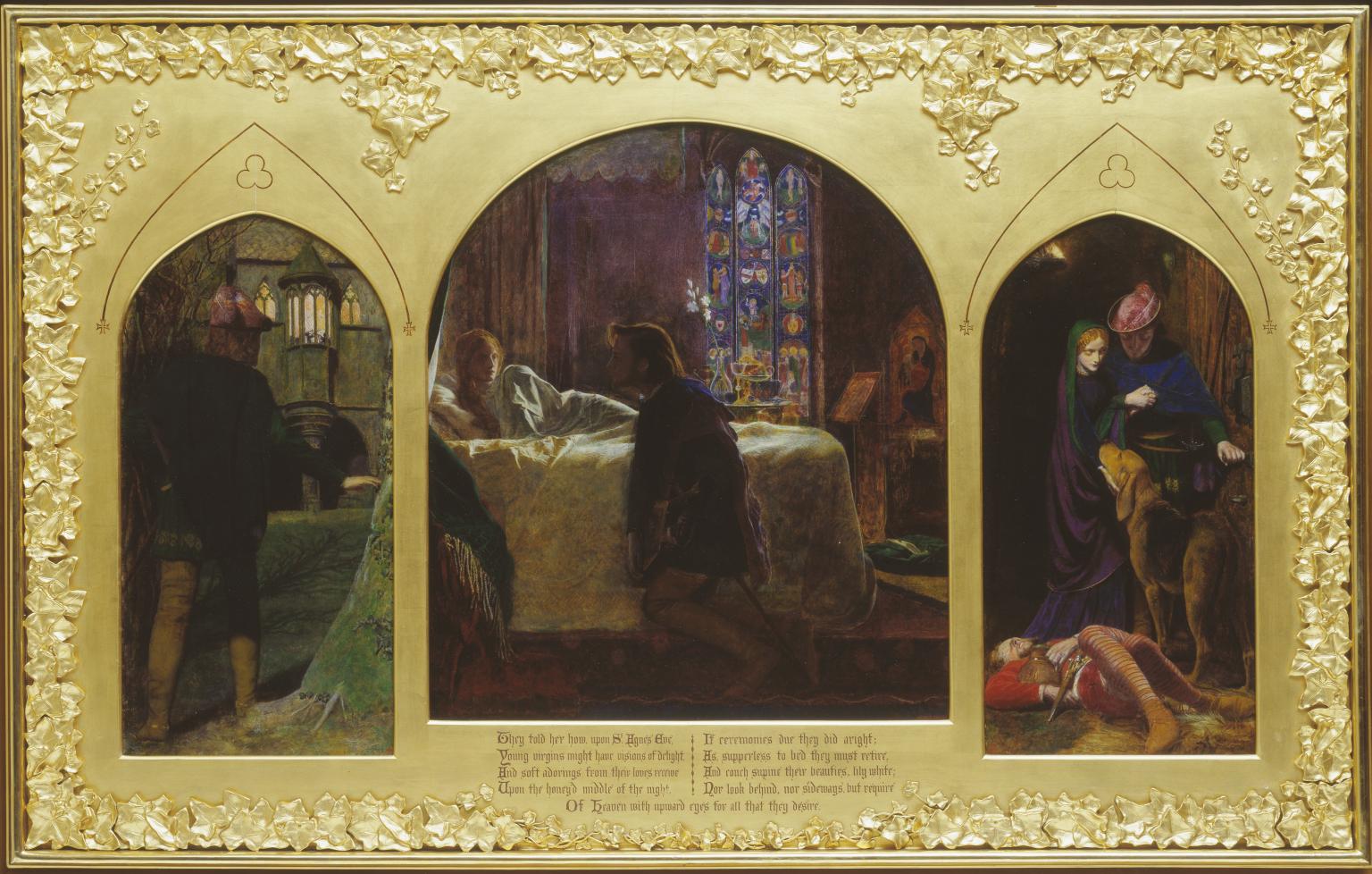
The Eve of Saint Agnes, Arthur Hughes (1856)
Last class, the question of whether or not Madeline was raped by Porphyro arose. I too had found their interaction to be a bit ambiguous, given Porphyro’s creepiness and St. Agnes’ being the patron saint of rape victims. Upon giving the poem a second reading, I believe that the two did have sex and that it was consensual, despite Madeline’s implying that Porphyro was uglier then she imagined. Madeline urges Porphyro to give her back his songs and “immortal looks” (L 313) The following interaction between the pair is then likened to that of flowers: a violet and a rose, producing a “solution sweet” ( L 322). Lastly, at the end of the stanza 36 it states that “St. Agnes’ moon hath set” (L 324). I believe that this means that Madeline’s chastity and virginity is no longer protected or accepted by St. Agnes, whom Madeline had prayed to.
